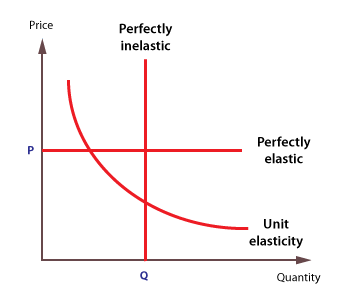Introduction
Price elasticity might sound like a complex economic term reserved for boardrooms and academic lectures. However, it's a concept that can profoundly impact setting prices for your products or services. Whether you're a seasoned business owner or starting out, understanding price elasticity can help you make informed pricing decisions that enhance your profitability.
Why is price elasticity crucial for business success?
Imagine you own a business selling a popular product. One day, you decide to raise the price by 10%, hoping to boost your revenue. Instead, you notice a sharp decline in sales. What happened? The answer lies in price elasticity.
In competitive markets, customers readily switch suppliers in response to price variations, leading to highly elastic demand and pricing dynamics. This concept helps explain why some customers might abandon your product after a price increase while others remain loyal.
Understanding price elasticity enables you to determine price elasticity using various research methods, such as conjoint analysis and historical sales data, to predict and respond.
What is the real-world relevance of the price elasticity of demand?
Price elasticity isn’t just theoretical; it’s a practical tool businesses use worldwide. Adjustments in pricing strategies affect sales volumes and significantly influence customer expectations and future purchasing behaviors.
Retailers, for instance, often analyze price elasticity to determine optimal pricing for their products. A company might lower prices during a sale to increase demand and clear out inventory, knowing that the product’s demand is elastic. Conversely, pharmaceutical companies might raise prices on life-saving drugs without losing customers because the demand for these necessities is inelastic.
Does the concept apply across business sectors?
Price elasticity affects various sectors, from tech gadgets to everyday groceries. Tech companies might use it to decide the launch price of a new smartphone, while grocery stores might adjust prices based on seasonal demand. Even services like streaming subscriptions and airline tickets rely on understanding price elasticity to maximize revenue and market share.
Empowering Business Decisions
By grasping the nuances of price elasticity, businesses can make data-driven decisions. This understanding enables them to set prices that attract customers without sacrificing profit margins. Additionally, it helps in designing effective marketing strategies and promotions. Knowing how sensitive customers are to price changes allows for better planning and execution of sales tactics.
What is Price Elasticity?

At its core, price elasticity measures consumers' sensitivity to price changes. It helps answer questions like: "If I raise my prices, will my customers still buy my product?" or "If I lower my prices, will I sell enough additional units to make up for the lower price?"
Definition and Concept of Price Elasticity of Demand
Price elasticity of demand (PED), also known as demand elasticity, is a critical economic concept that quantifies the relationship between price changes and the quantity demanded of a good or service.
Elasticity values are often referenced in terms of their absolute value to simplify understanding and comparison. Specifically, it measures the percentage change in quantity demanded resulting from a one percent change in price. This ratio is invaluable for businesses as it offers insight into how price adjustments can impact sales volumes.
Mathematical Expression
Price elasticity is typically expressed as a numerical value. Changes in price impact the initial quantity of goods demanded, which is crucial for assessing how sensitive demand is to price variations:
- Elastic: If the value exceeds 1, demand is elastic, meaning consumers are highly responsive to price changes. Products with high elasticity see significant changes in demand based on price fluctuations. For example, a small decrease in the price of a luxury item might lead to a substantial increase in the quantity sold.
- Inelastic: If the value is less than 1, demand is inelastic, meaning consumers are less responsive to price changes. For instance, a significant increase in the price of essential medications might lead to only a slight decrease in the quantity purchased.
- Unitary Elastic: If the value equals 1, changes in price lead to proportional changes in demand. Luxury goods often exhibit high price elasticity, where minor price adjustments can lead to substantial changes in consumer demand.
Interpretation of Elasticity Values
Understanding the elasticity value helps businesses predict consumer behavior. Estimated price elasticity can vary based on product category and consumer demographics. An elasticity greater than 1 indicates that consumers are price-sensitive; hence, price reductions can lead to higher sales volumes, which may offset the lower price.
Conversely, an elasticity less than 1 suggests that consumers are not very responsive to price changes, allowing businesses to increase prices without significantly affecting sales volumes.
Examples of Price Elasticity
To illustrate, consider two different products: gasoline and designer handbags.
- Gasoline: Typically exhibits inelastic demand. Even if prices rise, people must buy gasoline for their daily commute and other essential activities. Thus, the quantity demanded doesn't significantly decrease.
- Designer Handbags: Usually have elastic demand. If the price of a designer handbag increases significantly, consumers might opt for other brands or forgo the purchase altogether, leading to a substantial drop in the quantity demanded.
Price Elasticity in Different Market Conditions
Price elasticity can also vary under different market conditions. For example, during economic downturns, consumers become more price-sensitive, increasing the elasticity of demand for non-essential goods. Conversely, in a booming economy, the demand for luxury items might become less elastic as consumers have more disposable income. Higher prices sometimes lead to lower quantities demanded, as per the law of demand.
By understanding these nuances, businesses can better navigate pricing strategies, promotional campaigns, and market positioning to optimize sales and profitability. Higher prices lead to decreased quantity purchased, illustrating the inverse relationship between price and demand.
How is Price Elasticity Measured?

To calculate price elasticity, the formula for calculating price elasticity of demand (PED) is: Price Elasticity of Demand (PED) - Change in Quantity Demanded / Change in PriceIn this formula:
- % Change in Quantity Demanded is the percentage change in the quantity of the product that consumers demand.
- % Change in Price is the percentage change in the product's price.
Here's a step-by-step breakdown:
- Determine the initial and new prices and the corresponding quantities demanded.
- Calculate the percentage change in price and quantity.
- Divide the percentage change in quantity demanded by the percentage change in price.
Why is Price Elasticity Important?

Understanding price elasticity is crucial for businesses as it provides insights into how price changes impact consumer behavior and overall revenue. Here are several reasons why mastering this concept is vital:
Optimize Pricing
Identifying the optimal price point is essential for maximizing revenue and optimizing price strategies. By understanding the elasticity of their products, businesses can set prices that attract customers while ensuring profitability.
For instance, if a product has elastic demand, a slight price decrease could significantly increase sales volume, potentially increasing overall revenue. Conversely, if demand is inelastic, the company might increase prices without fearing a substantial drop in sales, thereby boosting profit margins.
Predict Consumer Behavior
Price elasticity helps businesses anticipate how customers will respond to price changes. This predictive capability allows companies to make informed decisions about pricing strategies, ensuring that any adjustments align with consumer expectations and market conditions. For example, a company planning to launch a new product can use price elasticity estimates to set a competitive price that maximizes market penetration.
Strategize Promotions
Effective promotional strategies rely on understanding price elasticity. When price decreases, the demand for certain products can increase significantly, illustrating the relationship between price changes and consumer behavior.
Companies can more effectively plan discounts and sales events by knowing how price changes will affect demand. For instance, during a holiday sale, a retailer might lower prices on certain elastic products to drive higher foot traffic and cross-sell inelastic items at regular prices, optimizing overall sales.
Understand Market Dynamics
Grasping price elasticity provides valuable insights into market dynamics and competitive behavior. Cross-price elasticity explains how the demand for one product is affected by the change in the price of another, which is significant for understanding market dynamics, competitive pricing strategies, and consumer behavior toward substitute and complementary goods.
It helps businesses understand how pricing strategies affect market share and how competitors' price changes might impact their demand. This knowledge is crucial for maintaining a competitive edge in the marketplace. For example, if a competitor lowers their prices, a company with a similar product must understand the elasticity of its product to decide whether to
Enhance Financial Planning
Price elasticity informs better financial planning and forecasting. Businesses can create more accurate revenue projections and budget allocations by predicting how price changes affect sales volumes. This foresight is essential for inventory management, resource allocation, and long-term strategic planning. For instance, a business can avoid overproduction or stockouts by understanding the expected demand fluctuations resulting from price adjustments.
Tailor Marketing Efforts
Marketing strategies can be fine-tuned based on the elasticity of different product segments. Products with elastic demand may benefit from price-based advertising campaigns, highlighting discounts and deals. In contrast, inelastic products might focus on value propositions, quality, and unique features that justify the higher price. This targeted approach ensures marketing efforts resonate more effectively with the intended audience.
Facilitate Product Differentiation
Understanding elasticity allows businesses to differentiate their products more effectively. For instance, if a product has inelastic demand due to brand loyalty or unique features, the company can emphasize these aspects in its marketing and product development. This strategy justifies a higher price and strengthens the product's market position.
Support Strategic Decision-Making
Informed strategic decisions are vital for business growth and sustainability. Knowledge of price elasticity supports various strategic decisions, from entering new markets to discontinuing unprofitable products. For example, a company considering international expansion can analyze price elasticity in the target market to set appropriate entry prices and anticipate potential demand.
Enhance Customer Relationships
Businesses can maintain better customer relationships by understanding how price changes affect demand. For example, a company that knows its customers are price-sensitive might opt for smaller, more frequent price increases rather than a single significant hike, thus maintaining customer loyalty and satisfaction.
Adapt to Economic Changes
Economic conditions can significantly impact consumer behavior. When the price rises, the quantity demanded typically declines, reinforcing the fundamental law of demand. During economic downturns,
Factors Affecting Price Elasticity

- Substitute Availability: More substitutes mean higher elasticity. Customers will easily switch if your product has many alternatives if you raise prices.
- Necessity vs. Luxury: Necessities tend to have inelastic demand, while luxuries are more elastic.
- Proportion of Income: Products that take up a more significant portion of income typically have more elastic demand.
- Time Period: Demand can become more elastic as consumers find alternatives or adjust their habits.
Price Elasticity of Demand Curve

Axes:
- Y-Axis (Vertical): Price of the product.
- X-Axis (Horizontal): Quantity demanded.
Curves:
- Elastic Demand Curve: Flatter slope, indicating that a small change in price leads to a large change in quantity demanded. Consumers are very responsive to price changes.
- Inelastic Demand Curve: This curve has a steeper slope, indicating that a large change in price leads to a small change in quantity demanded. Consumers are less responsive to price changes.
Key Points:
- Elastic Demand: When the curve is flatter, even a small price decrease (from P1 to P2) leads to a large increase in quantity demanded (from Q1 to Q2).
- Inelastic Demand: When the curve is steeper, a significant price change (from P1 to P2) results in only a slight quantity demanded (from Q1 to Q2).
Examples:
- Elastic Product: Non-essential goods, like luxury items, where consumers can easily switch to alternatives if the price increases.
- Inelastic Product: Consumers must buy essential goods, like medications, despite price changes.
Types of Consumer Goods with Different Price Elasticities

Understanding the price elasticity of different consumer goods helps businesses make strategic pricing, marketing, and inventory management decisions. Various factors, including necessity, availability of substitutes, and brand loyalty, influence the elasticity of demand for different types of goods. Let's explore these categories in more detail:
Essential vs. Non-Essential Goods
Essential Goods:
Essential goods are items that consumers need for their daily lives. These include food, utilities, healthcare products, and basic clothing. The demand for essential goods tends to be inelastic because consumers will continue to purchase them regardless of price changes. For example:
- Food: Basic staples such as bread, milk, and eggs are essential for survival. Even if prices rise, people will still buy these items, albeit possibly in slightly smaller quantities.
- Utilities: Electricity, water, and heating are necessary for modern living. Consumers have little choice but to pay their utility bills, making demand inelastic.
- Medications: Life-saving and essential medications have highly inelastic demand. Patients need these drugs regardless of price increases.
Non-Essential Goods:
Non-essential goods are items that consumers can live without. These include luxury items, entertainment products, and non-essential services. The demand for non-essential goods is generally more elastic because consumers can forgo these purchases when prices rise. For example:
- Luxury Electronics: High-end gadgets like the latest smartphones or smartwatches often have elastic demand. Consumers may delay their purchases or opt for more affordable alternatives if prices increase significantly.
- Dining Out: Eating at restaurants is a non-essential activity. When restaurant prices increase, consumers might dine out less frequently or switch to cheaper options.
- Leisure Travel: Vacations and leisure travel are typically considered non-essential. During economic downturns or high prices, consumers might reduce travel expenditures.
Availability of Substitutes
High Substitute Availability:
Products with many substitutes tend to have elastic demand. Income elasticity measures the demand sensitivity of products based on consumer income changes, impacting pricing strategies and market segmentation. Consumers can easily switch to alternative products if the price of the original product increases. For example:
- Fast Food: The fast-food market offers numerous options. If the price of one fast-food chain’s burger increases, customers can easily switch to another chain or choose a different type of fast food.
- Clothing: Fashion items have numerous substitutes in terms of brands, styles, and price ranges. A price increase in one brand’s clothing line can lead consumers to purchase from another.
Low Substitute Availability:
Products with few or no substitutes typically have inelastic demand. Consumers have limited options and are less sensitive to price changes. For example:
- Gasoline: While there are some alternatives like electric vehicles, gasoline remains the primary fuel for most cars. When gas prices rise, consumers still need fuel, making demand relatively inelastic.
- Prescription Drugs: Many prescription medications do not have over-the-counter equivalents or substitutes. Patients must purchase these drugs regardless of price increases.
Brand Loyalty and Marketing
Strong Brand Loyalty:
Brands that have cultivated strong loyalty often experience inelastic demand for their products. Consumers are willing to pay a premium for their preferred brands due to perceived quality, trust, and emotional connection. For example:
- Apple: Apple products, such as iPhones and MacBooks, command a loyal customer base. Despite being priced higher than many competitors, consumers often stick with Apple products, showing inelastic demand.
- Coca-Cola: Many consumers strongly prefer Coca-Cola over other cola brands. Even if the price of Coca-Cola increases, loyal customers may continue purchasing it instead of switching to a cheaper alternative.
Weak Brand Loyalty:
Products with weak brand loyalty or no significant brand differentiation tend to have more elastic demand. Consumers are more likely to switch brands based on price. For example:
- Generic Products: Generic or store-brand products often compete primarily on price. A small price increase can lead consumers to switch to another generic brand.
- Commodity Goods: Items like sugar, flour, and other basic commodities have little brand loyalty. Consumers typically choose the cheapest option available, making demand elastic.
Time Sensitivity and Perishability
Perishable Goods:
Perishable goods, such as fresh produce and dairy products, have elastic demand because consumers are sensitive to price changes due to their short shelf life. Industries with inelastic demand curves experience a lower elasticity of demand, indicating that price increases may favor these markets. For example:
- Fruits and Vegetables: Fresh produce must be consumed quickly before it spoils. If prices rise, consumers might buy less or switch to non-perishable alternatives like canned or frozen produce.
Non-Perishable Goods:
Non-perishable goods, such as canned foods and household supplies, have more inelastic demand because consumers can stockpile them. For example:
- Canned Goods: Items like canned beans or soup have a long shelf life. Consumers are less sensitive to price changes and may continue buying them even if prices increase slightly.
Durable vs. Non-Durable Goods
Durable Goods:
Durable goods, such as appliances, furniture, and vehicles, last for an extended period. The demand for durable goods is generally more elastic because consumers can delay purchases during price increases. For example:
- Automobiles: Consumers often postpone buying new cars if prices rise, opting to maintain their current vehicles longer.
- Home Appliances: Large appliances like refrigerators and washing machines are significant investments. Price increases can lead consumers to delay upgrades or repairs.
Non-Durable Goods:
Non-durable goods such as food, toiletries, and cleaning supplies are quickly consumed. The demand for non-durable goods is typically more inelastic because these items must be replaced frequently. For example:
- Toilet Paper: Consumers will purchase toilet paper regularly regardless of price changes.
- Cleaning Products: Items like dish soap and laundry detergent are necessary for daily chores, leading to inelastic demand.
By understanding the price elasticity of various consumer goods, businesses can make informed decisions about pricing strategies, marketing efforts, and inventory management. This knowledge helps optimize sales, revenue, and customer satisfaction across product categories.
Using Price Elasticity - A Price Promotion Example

Using Price Elasticity to Evaluate a Price Promotion
Let’s say you run a bakery, and you’re considering a promotion on your signature cupcakes. Typically, you sell them for $4 each, and you’re thinking of running a promotion where you sell them for $3 each.
According to the law of demand, lower prices increase the quantity demanded, which is critical in understanding market dynamics and consumer behavior.
First, you estimate the price elasticity of demand based on past data:
- When you previously reduced the price from $4 to $3.50, sales increased from 200 to 250 units per week.
- Calculate the PED:

A PED of -2 indicates elastic demand. Thus, a price drop to $3 could significantly boost sales. You could expect more than a proportional increase in quantity sold, making the promotion potentially very effective.
Conclusion
Understanding and leveraging price elasticity is not just an academic exercise; it's a practical tool that can drive your business's success. Knowing your customers' sensitivity to price changes allows you to set prices that optimize your sales and profitability. So, next time you're contemplating a price adjustment, take a moment to consider the elasticity of your product or service. It might just be the key to unlocking greater business success.

Frequently Asked Questions (FAQ): Understanding Price Elasticity
What is the price elasticity of demand?
Price elasticity of demand (PED) measures how sensitive the quantity demanded of a good is to changes in its price. It is calculated as the percentage change in quantity demanded divided by the percentage change in price.
How is the price elasticity of demand calculated?
The formula for calculating PED is:

For example, if the price of a product increases from $3 to $3.50 and the quantity demanded decreases from 100 units to 80 units, the PED would be:
![An equation to calculate the price elasticity of demand (PED). The equation is PED = [(80 - 100) / 100] ÷ [(3.50 - 3) / 3]. Simplified, it becomes PED = -20% / 16.67%, resulting in price elasticity of demand (PED) being -1.2. An equation to calculate the price elasticity of demand (PED). The equation is PED = [(80 - 100) / 100] ÷ [(3.50 - 3) / 3]. Simplified, it becomes PED = -20% / 16.67%, resulting in price elasticity of demand (PED) being -1.2.](https://asymmetric.pro/wp-content/uploads/2024/07/Coffee_Shop_PED_equation_QA-700x140.jpg)
A PED of -1.2 indicates that demand is elastic.
Why is understanding price elasticity important for businesses?
Understanding price elasticity helps businesses make informed pricing decisions, predict consumer behavior, strategize promotions, understand market dynamics, enhance financial planning, tailor marketing efforts, facilitate product differentiation, support strategic decision-making, strengthen customer relationships, and adapt to economic changes.
What is the difference between elastic and inelastic demand?
Elastic demand means that consumers are highly responsive to price changes, resulting in a significant change in quantity demanded. Inelastic demand means that consumers are less responsive to price changes, resulting in a smaller change in quantity demanded.
Can you give examples of products with elastic and inelastic demand?
- Elastic Demand: Luxury electronics, dining out, leisure travel. These are non-essential goods where consumers can easily reduce consumption or switch to alternatives if prices rise.
- Inelastic Demand: Gasoline, essential medications, and basic food items are essential goods that consumers need regardless of price changes.
What factors influence the price elasticity of demand for a product?
Factors influencing price elasticity include the availability of substitutes, whether the product is a necessity or a luxury, the proportion of income spent on the product, and the period consumers can adjust to price changes.
How does the availability of substitutes affect price elasticity?
Products with many substitutes tend to have higher (more elastic) price elasticity because consumers can easily switch to an alternative if the price of the product increases. Products with few or no substitutes tend to have lower (more inelastic) price elasticity.
Why do essential goods typically have inelastic demand?
Essential goods are inelastically in demand because they are necessary for daily life, and consumers will continue to purchase them despite price increases. Examples include food, utilities, and medications.
How can businesses use price elasticity to strategize promotions?
By understanding their products' price elasticity, businesses can more effectively plan discounts and sales events. For products with elastic demand, lowering prices during promotions can significantly increase sales volumes, while for inelastic products, businesses might focus on other value propositions rather than price reductions.
How does price elasticity affect financial planning and forecasting?
Knowledge of price elasticity helps businesses create more accurate revenue projections and budget allocations by predicting how price changes affect sales volumes. This foresight aids inventory management, resource allocation, and long-term strategic planning.
What role does brand loyalty play in price elasticity?
Strong brand loyalty can make demand for a product more inelastic because consumers are willing to pay a premium for their preferred brand. Conversely, weak brand loyalty results in more elastic demand as consumers are more likely to switch brands based on price.
Can price elasticity change over time?
Price elasticity can change over time as consumers find alternatives or adjust their habits. For instance, in the short term, demand for a product might be inelastic, but in the long term, as consumers find substitutes or change their consumption patterns, demand could become more elastic.

Ready to Use Pricing Principles in Your Business?
Get Expert Guidance
If you need personalized advice or want to discuss how these pricing principles can be tailored to your business, we're here to help!
- Contact us: Contact Form
- Schedule a complimentary consultation: Book Now
Don't miss this opportunity to gain valuable insights and advance your business strategy.
Mark Hope
Partner, Asymmetric Marketing
📧 mark.hope@asymmetric.pro
📞 (608) 410-4450
About the author
Mark A. Hope is the co-founder and Partner at Asymmetric Marketing, an innovative agency dedicated to creating high-performance sales and marketing systems, campaigns, processes, and strategies tailored for small businesses. With extensive experience spanning various industries, Asymmetric Marketing excels in delivering customized solutions that drive growth and success. If you’re looking to implement the strategies discussed in this article or need expert guidance on enhancing your marketing efforts, Mark is here to help. Contact him at 608-410-4450 or via email at mark.hope@asymmetric.pro.

